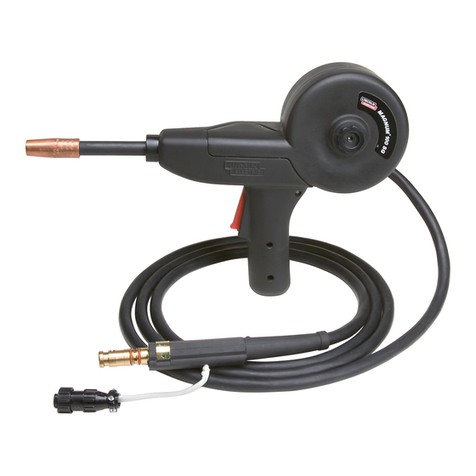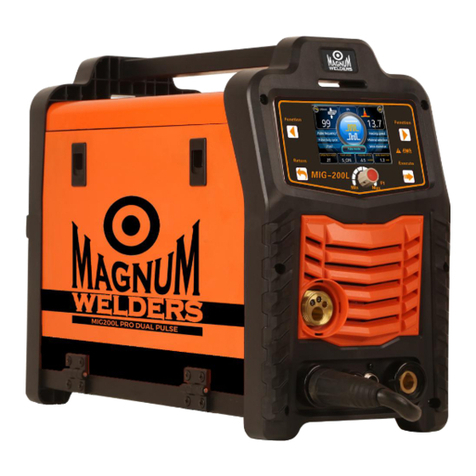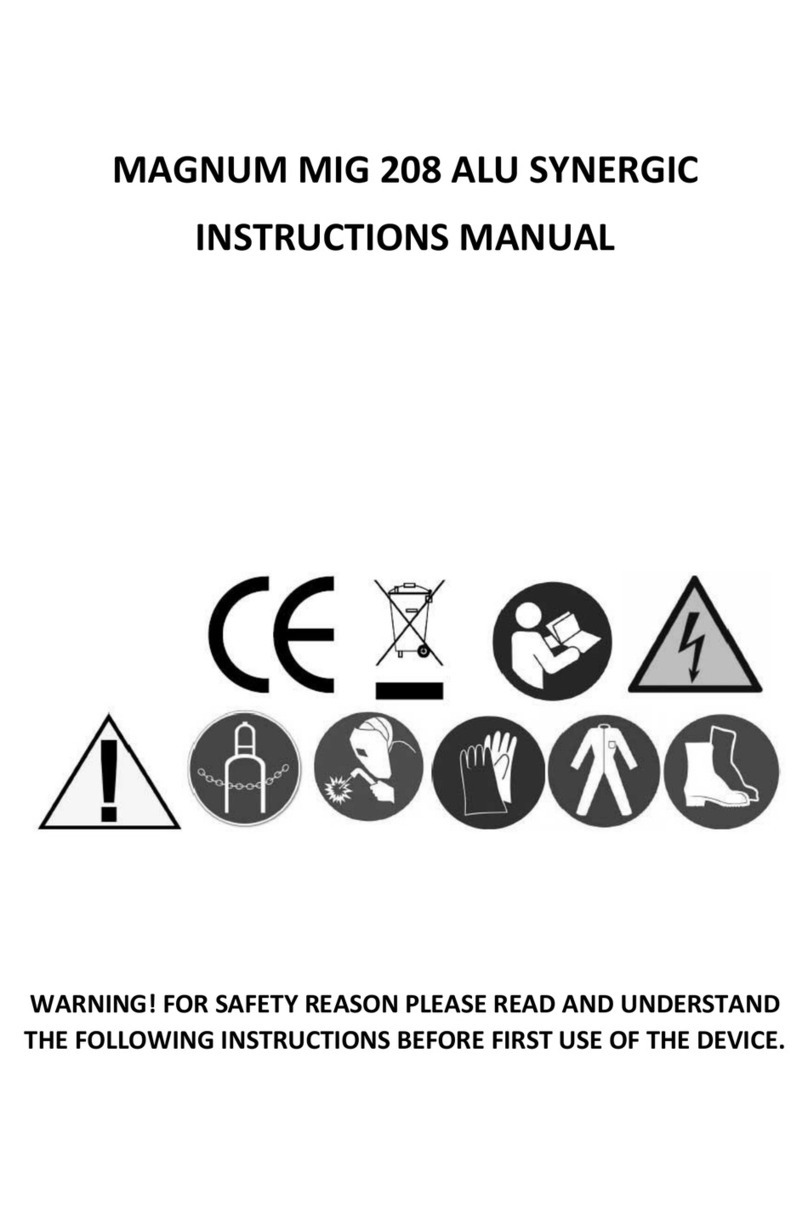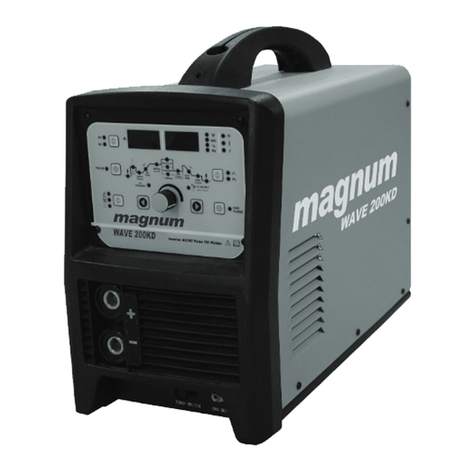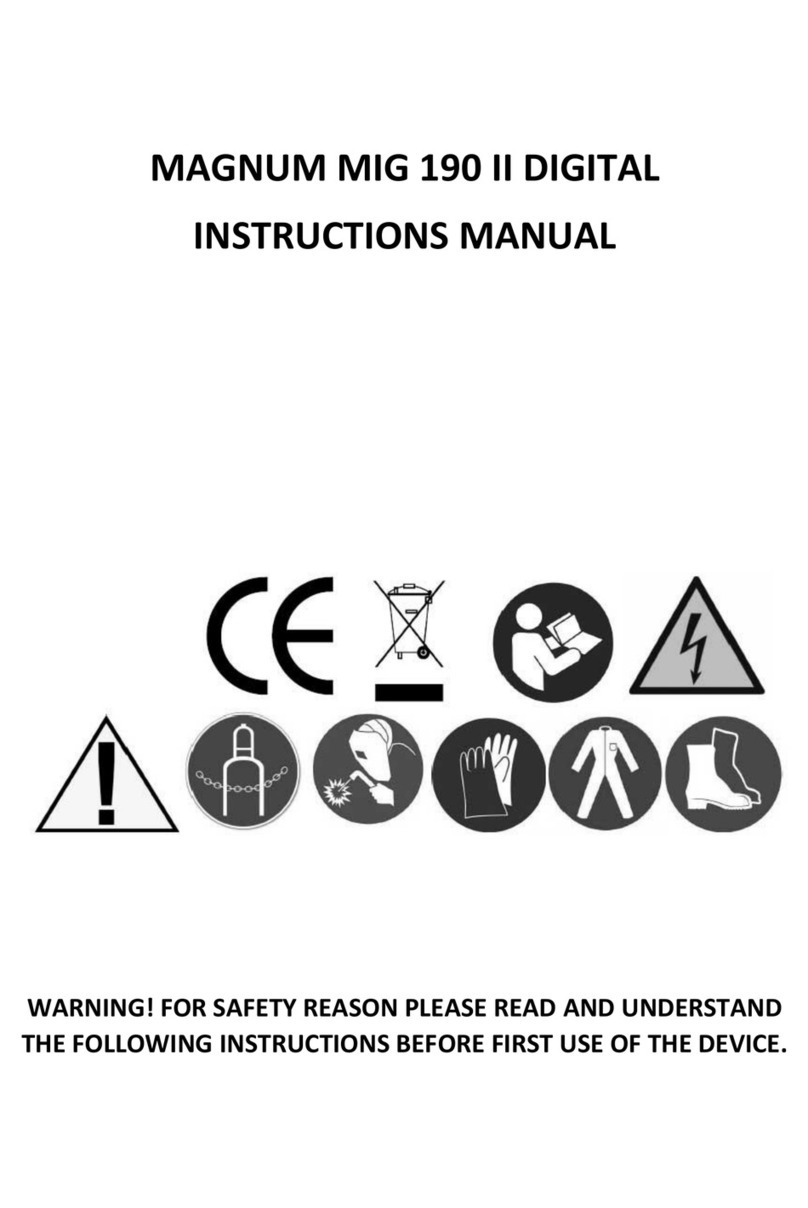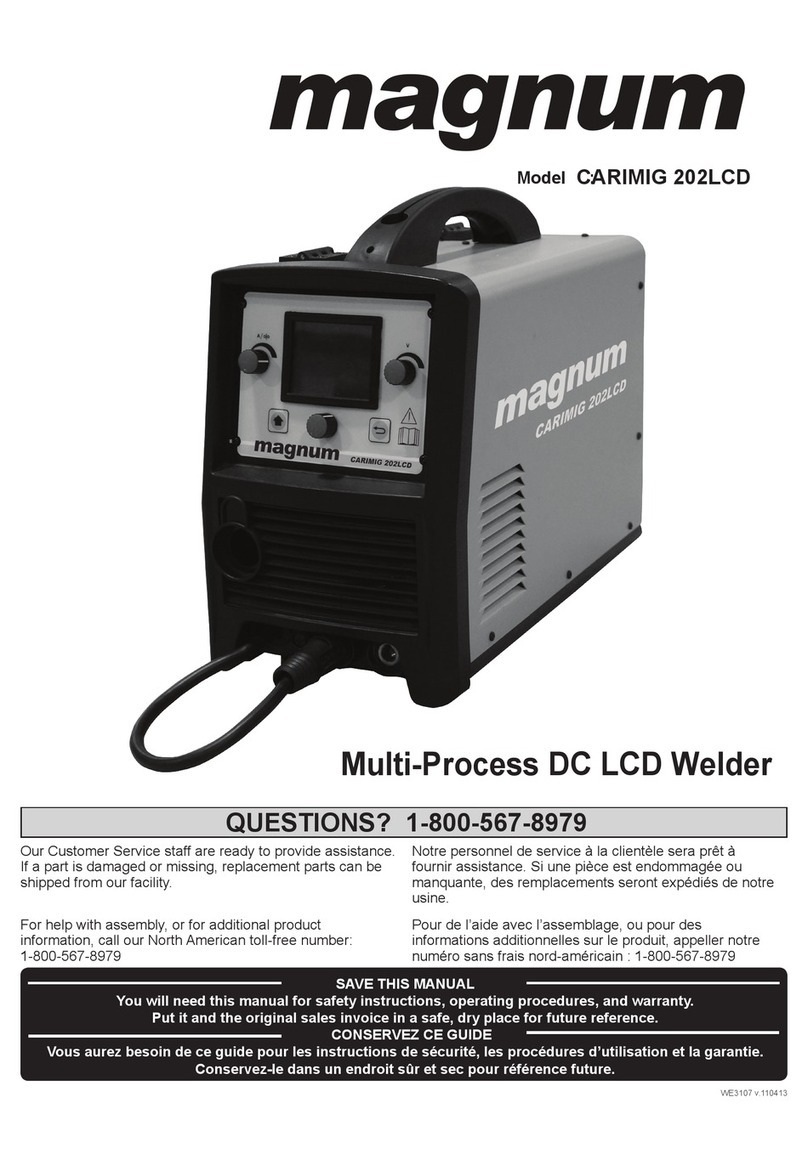
6
d) Organize welding equipment.
3.6. Final remarks.
a) When performing welding work inside the tanks, boilers or other confined spaces (to 15m3), a
welder should be insured by another person, who will remain on the outside.
ELECTRIC SHOCK CAN KILL: Welding apparatus produce a high voltage. Do not touch the torch or welding material ELECTRIC SHOCK CAN KILL: Welding apparatus produce a high voltage. Do not touch the torch or welding material
connected when the device is turned on to the network. All the elements forming the welding current circuit can cause
electrical shock and should therefore be avoided touching them with bare hands or by wet or damaged protective
clothing. Never work on a wet surface, or use damaged welding cables.
NOTE: Removing the external time when the device is connected to the network, as well as the use of the device
with the covers removed is prohibited!
Welding cables, ground cable, earthing terminal and welding equipment should be kept in good condition, ensuring
safety.
FUMES AND GASES CAN BE DANGEROUS: In the welding process are produced noxious fumes and gases FUMES AND GASES CAN BE DANGEROUS: In the welding process are produced noxious fumes and gases
hazardous to health. Workplace should be adequately ventilated and equipped with exhaust ventilation. Do not weld in
confined spaces. Avoid inhalation of vapors and gases. The surfaces of the elements to be welded should be free from
chemical impurities such as degreasing agents (solvents) which decompose during welding to produce toxic gases.
ARC RAYS CAN BURN: It is not allowed to look directly at the eyes uncovered and exposed to the arc. Always wear a ARC RAYS CAN BURN: It is not allowed to look directly at the eyes uncovered and exposed to the arc. Always wear a
mask or helmets protected with a suitable filter. Bystanders, nearby, protected with non-combustible, absorbing radiation
screens. Protect the exposed parts of the body suitable protective clothing made of non-combustible material.
ELECTROMAGNETIC FIELDS MAY BE DANGEROUS: Electric current flowing through wires Welding produces ELECTROMAGNETIC FIELDS MAY BE DANGEROUS: Electric current flowing through wires Welding produces
electromagnetic field around it. Electromagnetic fields can interfere with pacemakers. Welding cables should be arranged
in parallel, as close as possible to each other.
SPARKS CAN CAUSE FIRE: Sparks generated during welding can cause fire, explosion and burns unprotected skin. SPARKS CAN CAUSE FIRE: Sparks generated during welding can cause fire, explosion and burns unprotected skin.
When welding should be wearing welding gloves and protective clothing. Remove or secure any flammable materials and
substances from the workplace. Do not weld closed containers or receptacles in which there were flammable liquids.
Such containers or tanks should be rinsed prior to welding in order to remove flammable liquid. Do not weld near
flammable gases, vapors or liquids. Fire extinguishing equipment (fire blankets and fire extinguishers powder or snow)
should be located close to the workstation in a conspicuous and easily accessible place.
POWER SUPPLY: Disconnect the power supply before carrying out any work, repairs on the device. Regularly check the POWER SUPPLY: Disconnect the power supply before carrying out any work, repairs on the device. Regularly check the
welding cables. If you note any damage to the wire or insulation they should be replaced immediately. Welding wires can
not be overwhelmed, touch sharp edges or hot objects.
CYLINDER could explode: Use only approved cylinders and a functioning regulator. The cylinder should be transported CYLINDER could explode: Use only approved cylinders and a functioning regulator. The cylinder should be transported
and stand upright. Protect against hot cylinders heat, and mechanical overturning. Keep in good condition all the
components of the gas system: tank, hose, fittings, reducer.
WELDED MATERIALS CAN BURN: Never touch the parts to be welded unprotected parts of the body. While touching WELDED MATERIALS CAN BURN: Never touch the parts to be welded unprotected parts of the body. While touching
and moving the welding material, always use gloves and welding pliers.
